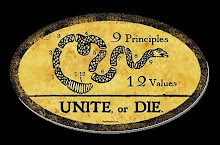Calculate 100/89. You get the decimal expansion 1.1235955056 . . .
Look closely, and you'll see that this fraction generates the first five Fibonacci numbers (1, 1, 2, 3, and 5) before blurring into other digits. Recall that, starting with 1 and 1, each successive Fibonacci number is the sum of the two previous Fibonacci numbers: 1, 1, 2, 3, 5, 8, 13, 21, 34, 55, 89, and so on.
Calculate 10000/9899. This time, you get 1.0102030508132134559046368 . . .
This fraction generates the first 10 Fibonacci numbers (using two digits per number). Going further, the fraction 1000000/998999 generates the first 15 Fibonacci numbers (using three digits per number).
Note that, in successive fractions, two 0s are appended to the numerator and a 9 to the beginning and end of the denominator.
Will the next fraction, 100000000/99989999, generate the first 20 Fibonacci numbers? Does the pattern continue forever? The answer appears to be yes.
James Smoak discovered this curious phenomenon, and he and Thomas J. Osler went on to prove that this class of fractions always produces decimal expansions containing terms of the Fibonacci sequence. They described it as "a magic trick from Fibonacci."
A little later, Marjorie Bicknell-Johnson found a formula, or "generalized mathematical magician," that identifies fractions whose decimal representations include successive values belonging to a variety of other sequences. She called them designer decimals.
In the November College Mathematics Journal, Smoak (with O-Yeat Chan) continues his adventures in the realm of designer decimals.
Consider, for example, the fraction 10000/9801. It has the decimal expansion 1.0203040506 . . . , suggesting the existence of a new class of fractions with curious properties.
Smoak and Chan ask: Do all the integers from 1 to 99 occur in the sequence? Given that the decimal expansion must repeat, what is the length and nature of the repeating part?
The key, Smoak and Chan say, is to note that 9801 = 992. So 10000/9801 = (100/99)2 = (1.0101010101 . . . )2.
Then, it's possible to show that the repeating part is 0203 . . . 97990001.
In general, fractions of the form [10n/(10n – 1)]k yield the sequence of integers in their decimal expansions.
It's amazing what can lie hidden in simple fractions!































No comments:
Post a Comment